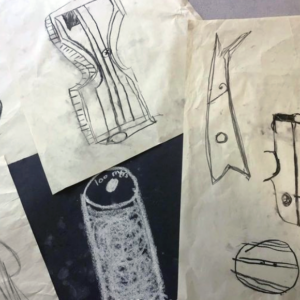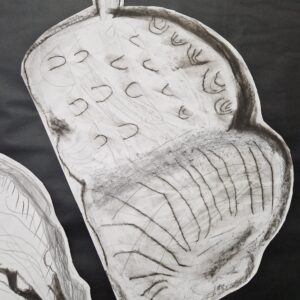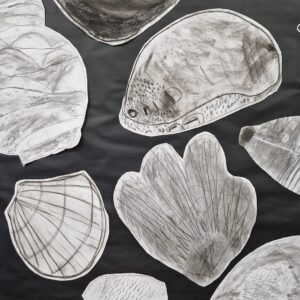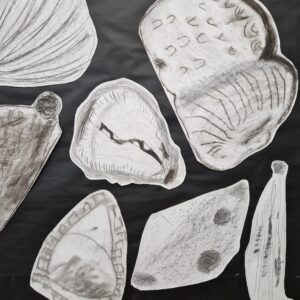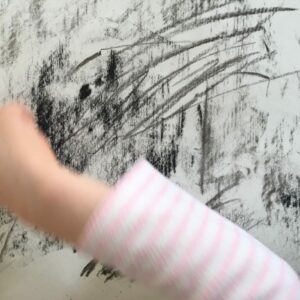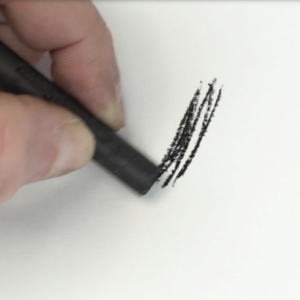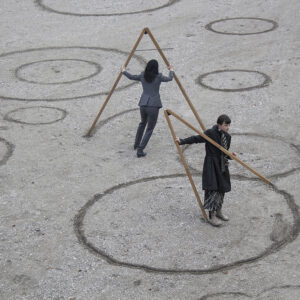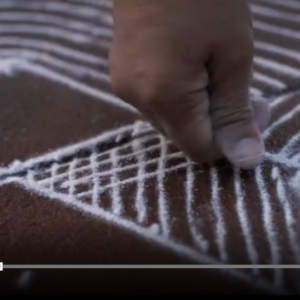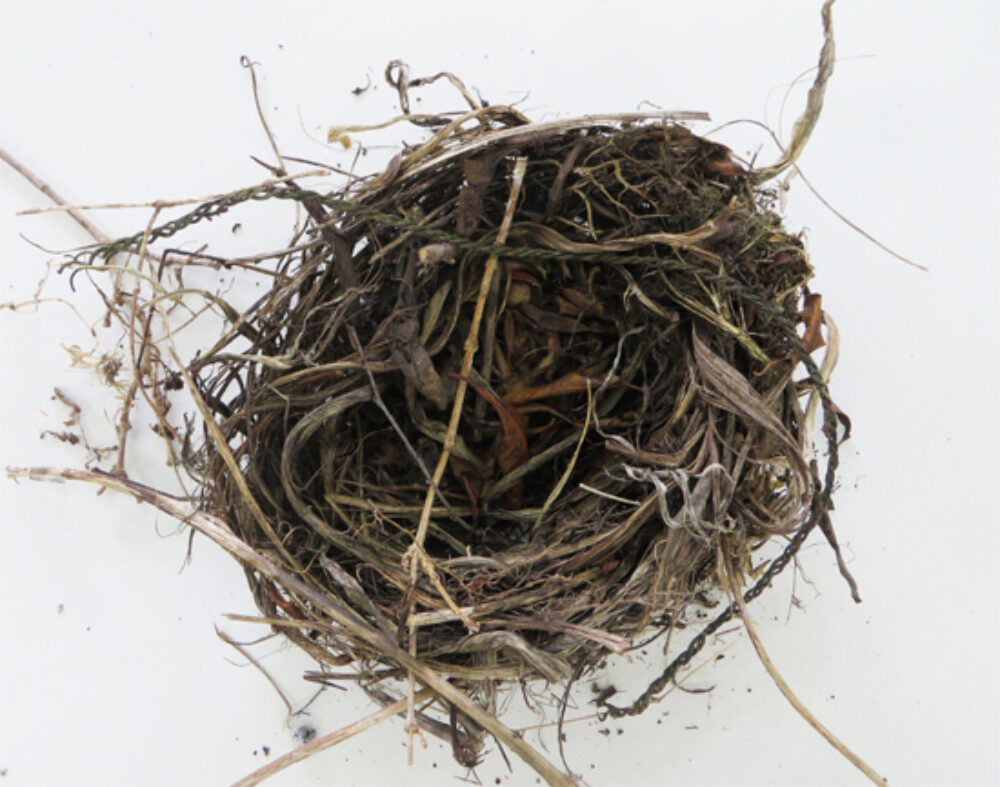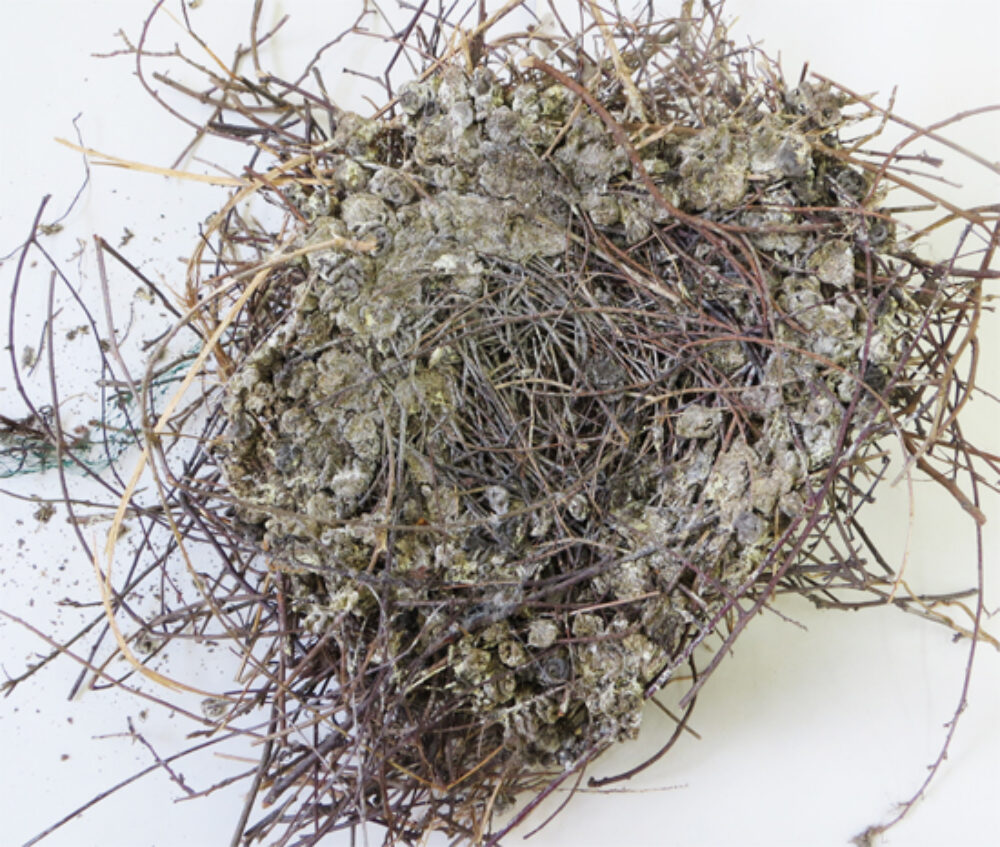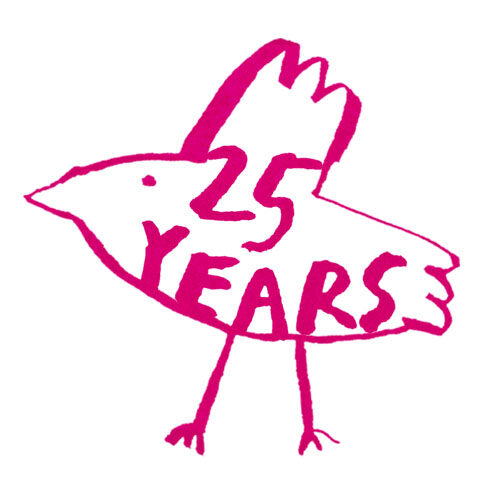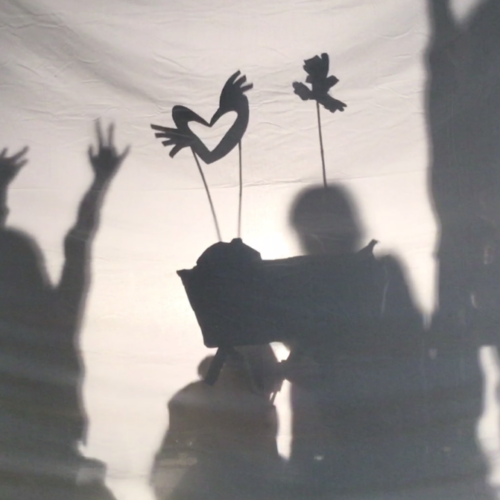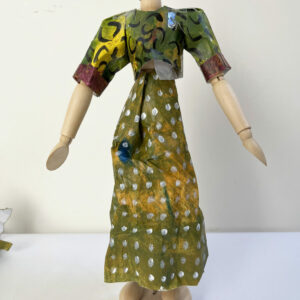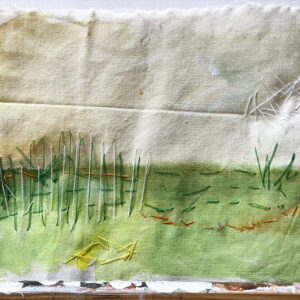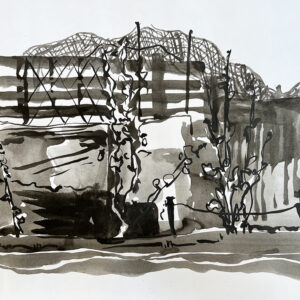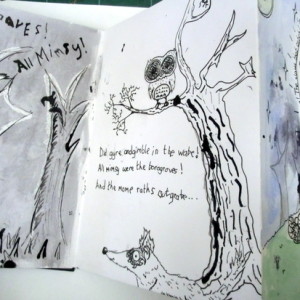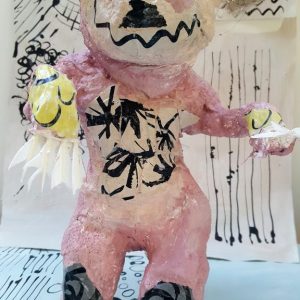Catherine Laing shares her journey with her baby daughter during the Covid 19 lockdown. Inspired by the many beautiful things that end up on the shore, each day Catherine collects 10 similar objects, takes them home, and then draws on them an image of something she sees that makes her feel hopeful. Once completed (this can take a day, or a week) she leaves them sitting on the groynes on #Broughtyferry beach to (hopefully) share with other walkers and (more likely!) the River Tay. And then repeats the process…
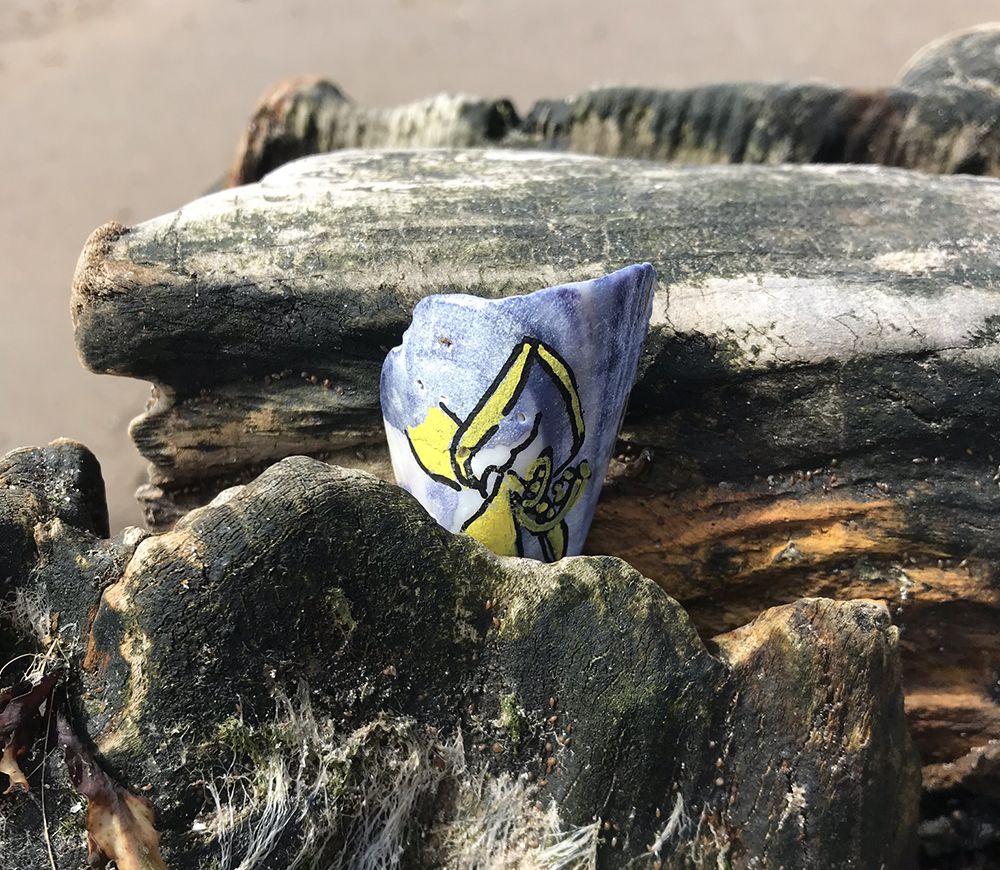
“At the beginning of the lockdown, like everyone, I felt isolated. So, during my daily walks, I would play a game where I would always try to smile at everyone I passed, to try and summon up some hope for us all. I began to think of how to connect with others in a more concrete way, in a time where we all had to remain separate. I found myself drawn to the decaying groynes on the local beach. Originally designed to stem the erosion of the beach, over time they have eroded and are now beautiful objects encrusted with shells, seaweed and barnacles. I decided to use them as a site for an artwork, which would be a way to share the burgeoning hope I felt when walking on the sand with my daughter.
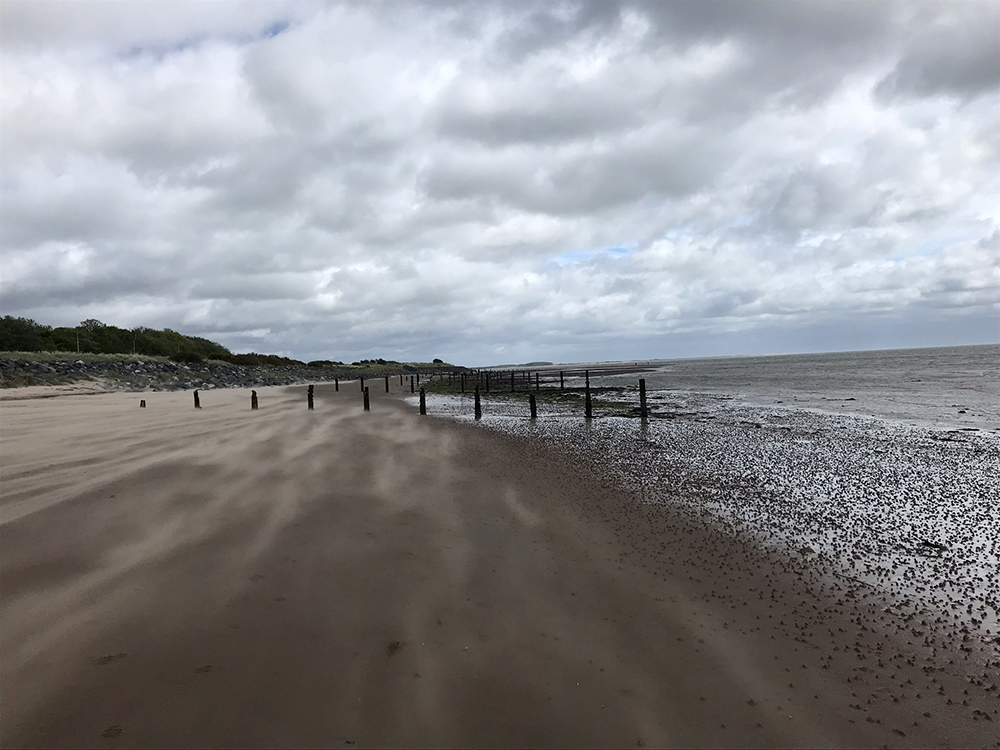
During my walks I collect ten similar objects from the beach that catch my eye. I then take these home and draw an image on them of something I have seen on that same walk that made me feel hopeful. On the opposite side of the objects I write ‘Look for hope in the small things’
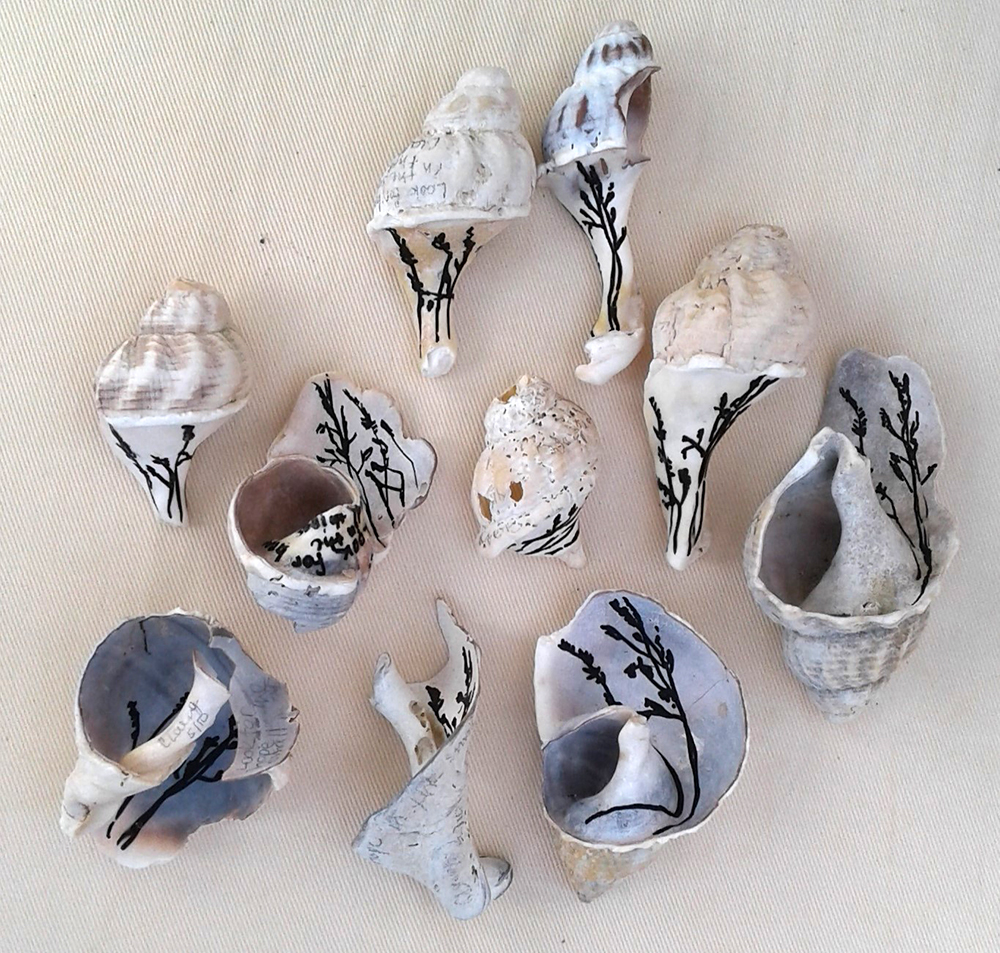
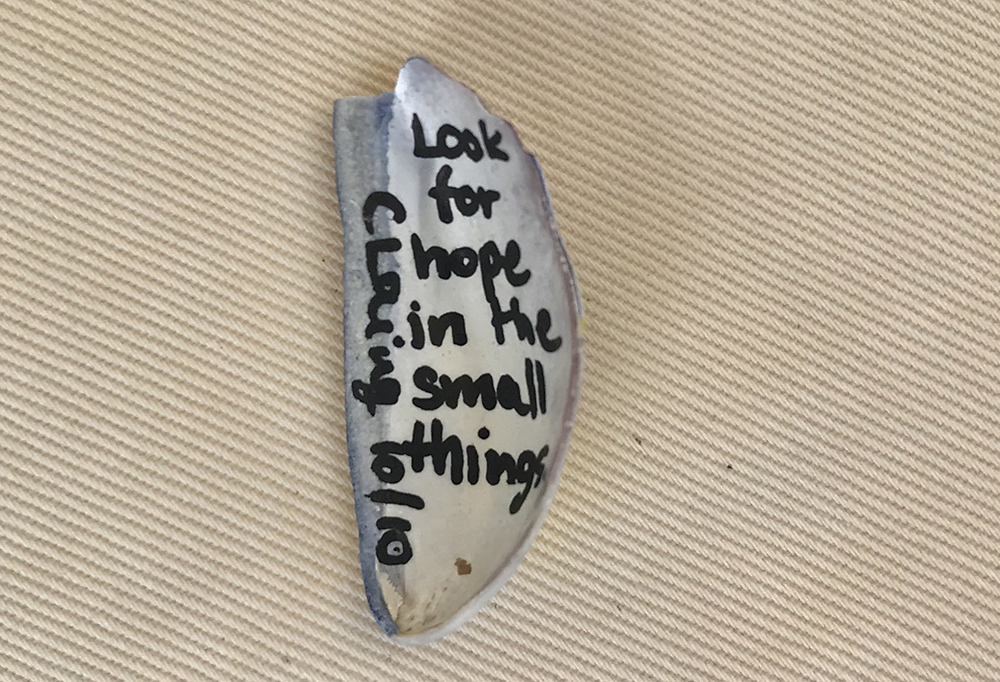 When these drawings are complete, I return them to the beach and place them on the groynes. My hope is that they will be seen, and even collected by other people, and they will feel the joy of finding something unexpected when they are walking. However, I realise that many of them will be washed away with the tide. At the time of writing I have made thirteen sets of these drawings – my goal is to reach a symbolic 19!
When these drawings are complete, I return them to the beach and place them on the groynes. My hope is that they will be seen, and even collected by other people, and they will feel the joy of finding something unexpected when they are walking. However, I realise that many of them will be washed away with the tide. At the time of writing I have made thirteen sets of these drawings – my goal is to reach a symbolic 19!
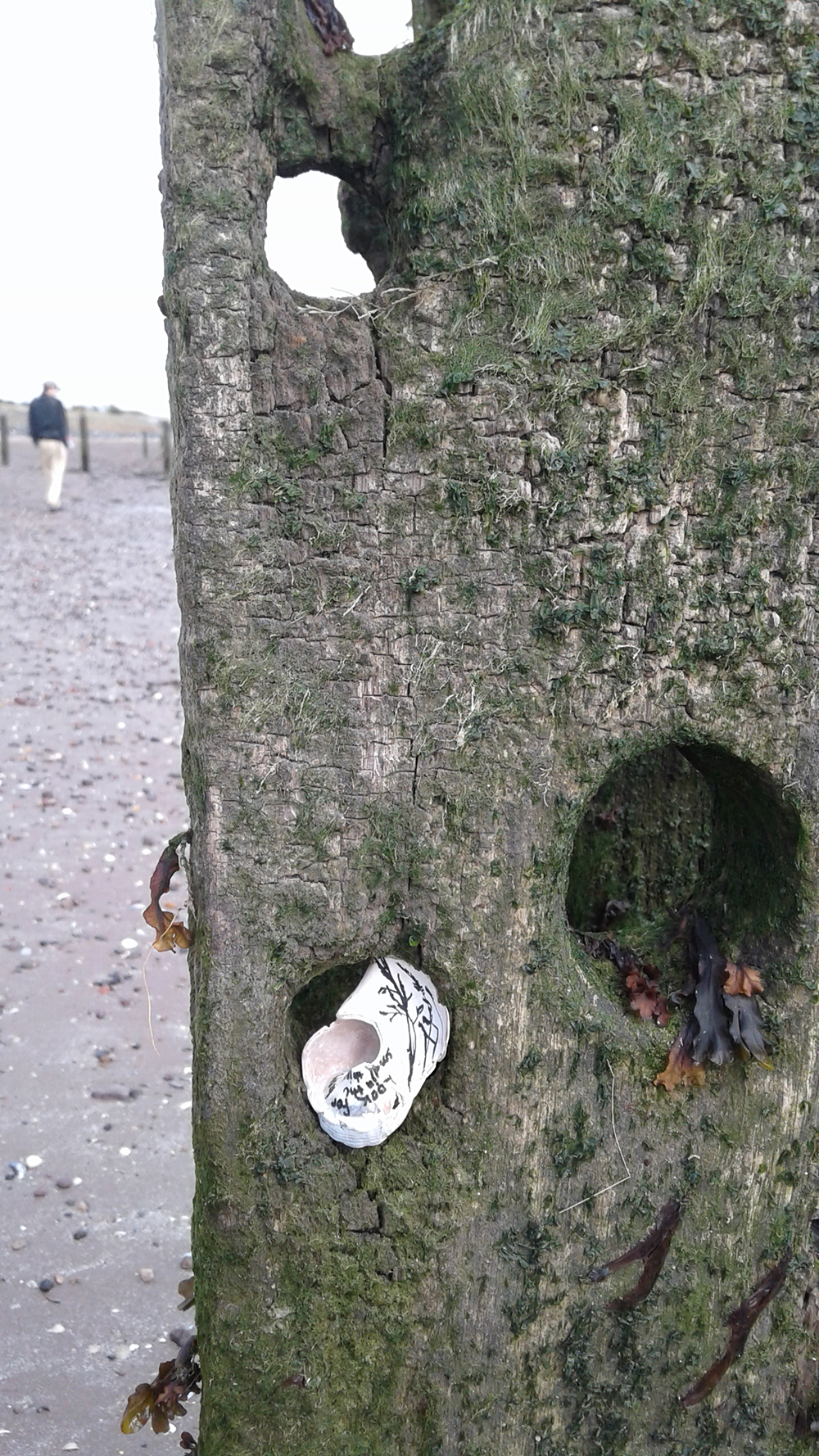
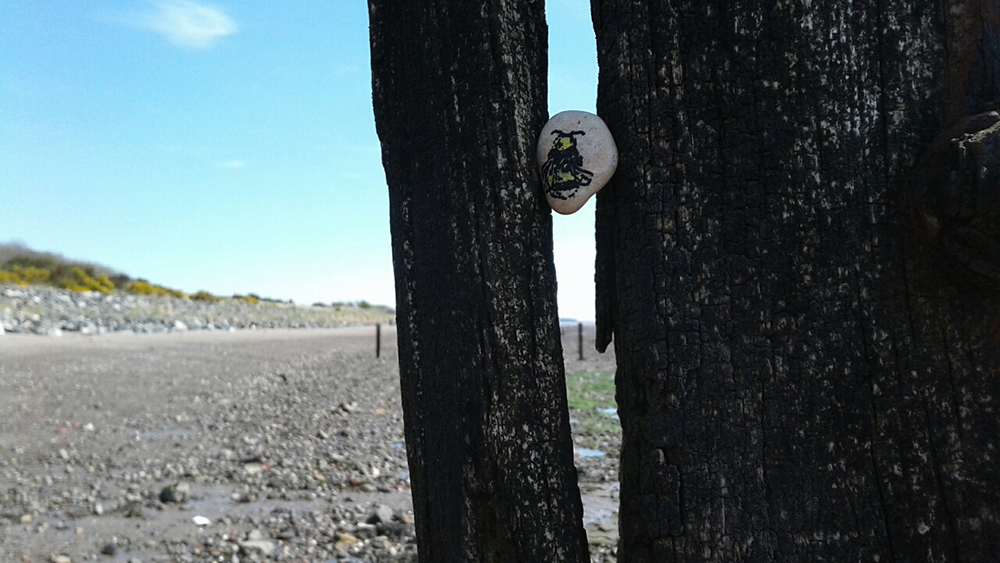
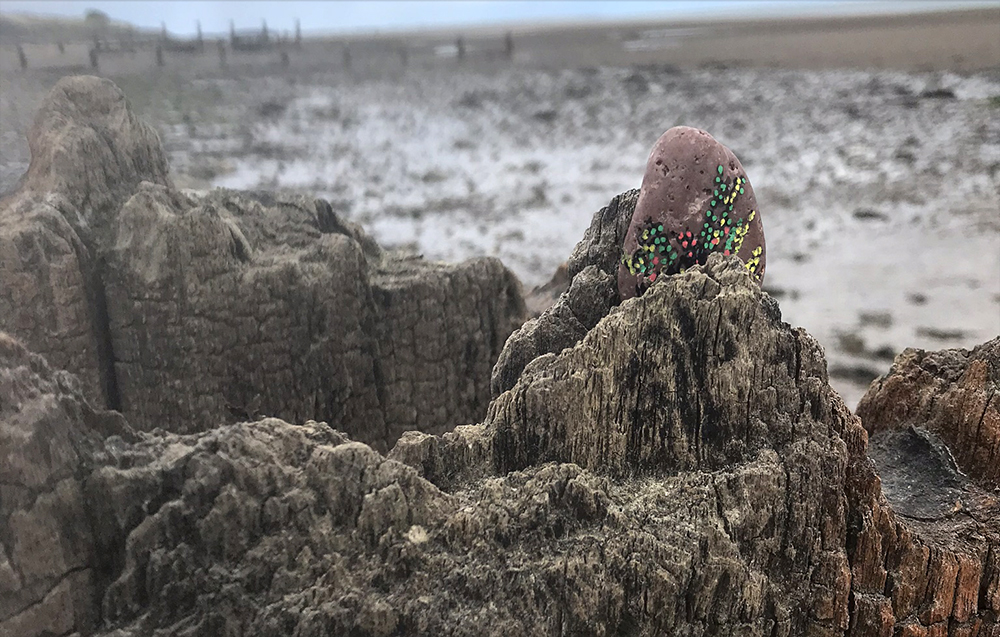
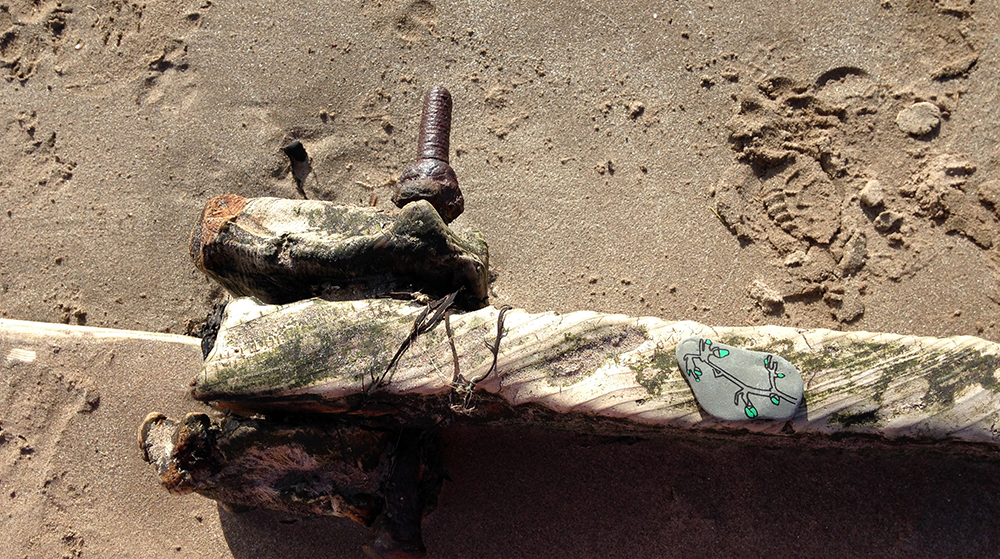
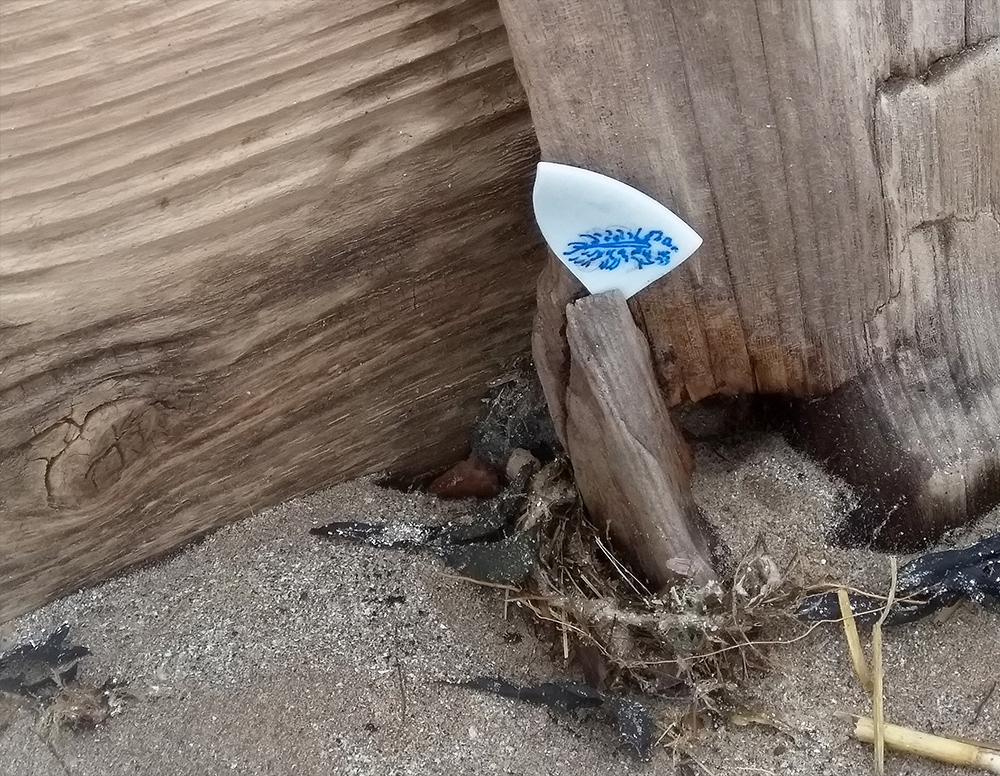
I have kept one of each of all the editioned drawings and have taken photographs of them on the groynes.
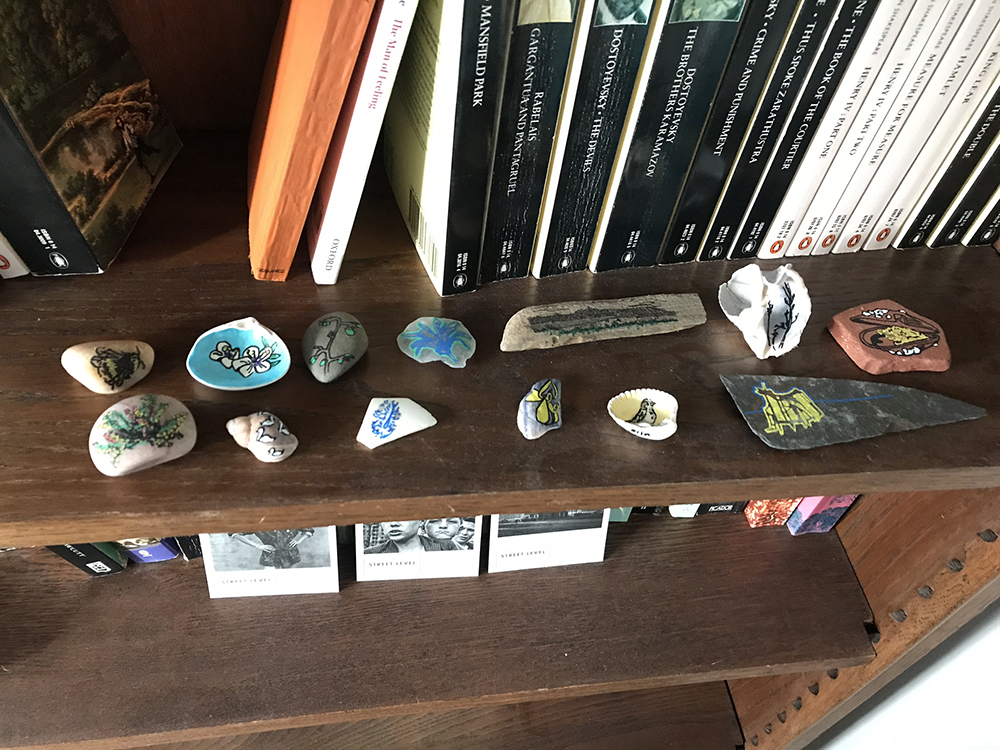
Due to the small size of many of my drawings, and having observed how people walk along the beach looking at the skyline, I’m not sure that many people notice my work before it is washed away. However, by posting photographs on social media I have found a second, wider audience to connect with.
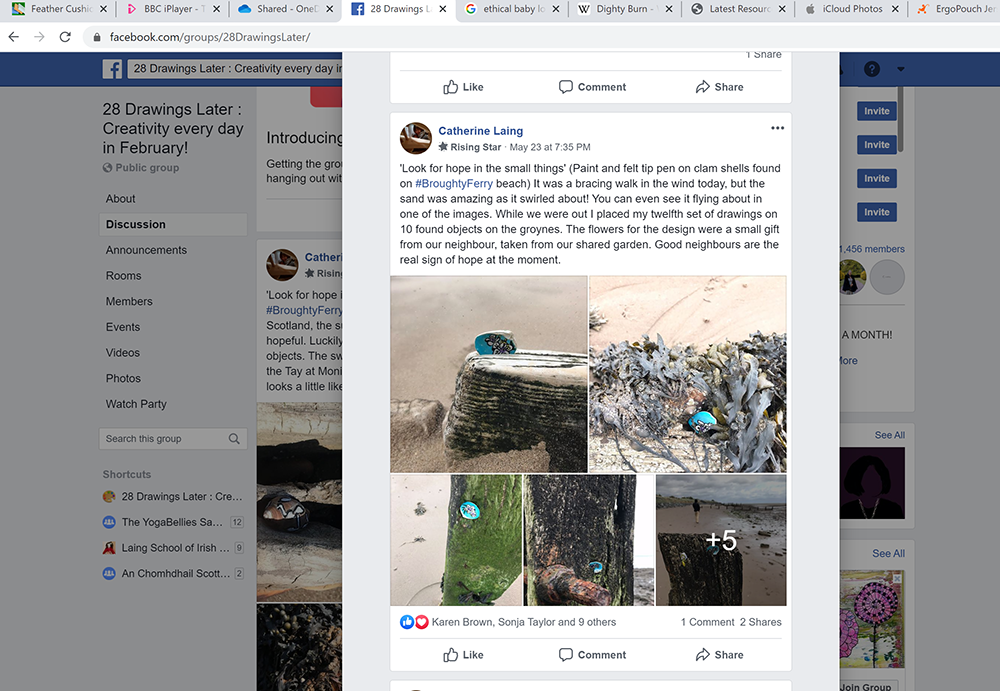 Initially, I just sat my work on the groynes; however, over time I found ways to wedge them into the rotting wood. This makes them more secure and makes them feel more part of the existing landscape. I always feel a thrill upon returning on another day to find that some are still there!
Initially, I just sat my work on the groynes; however, over time I found ways to wedge them into the rotting wood. This makes them more secure and makes them feel more part of the existing landscape. I always feel a thrill upon returning on another day to find that some are still there!
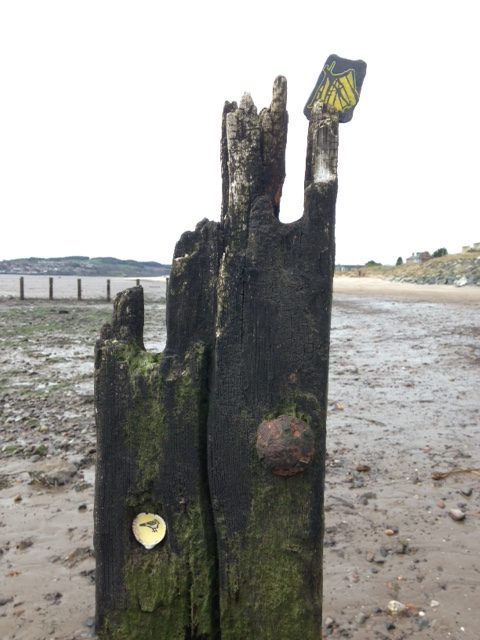
Each time, I challenge myself to find a different material to draw on. My only criteria are that the objects are small, and have a relatively smooth surface to draw on. Each time I have to adapt my technique to the different textures and shapes of the chosen objects.
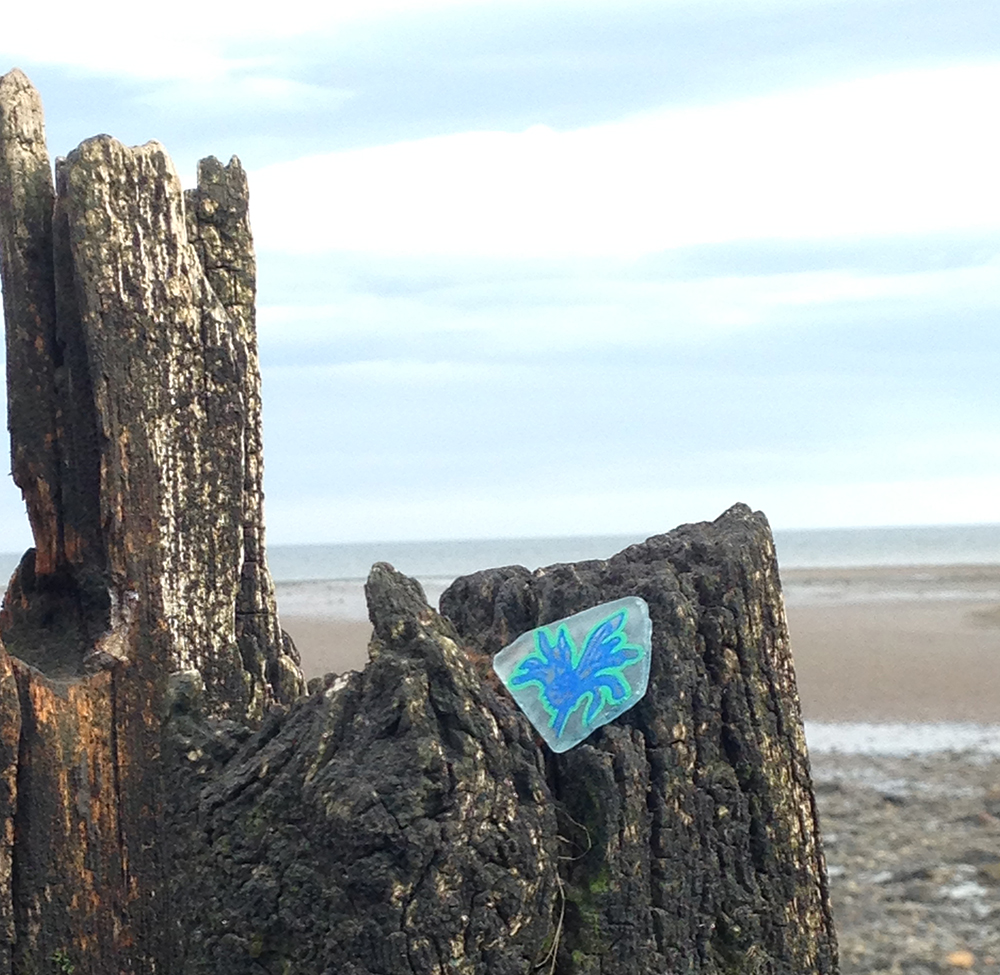
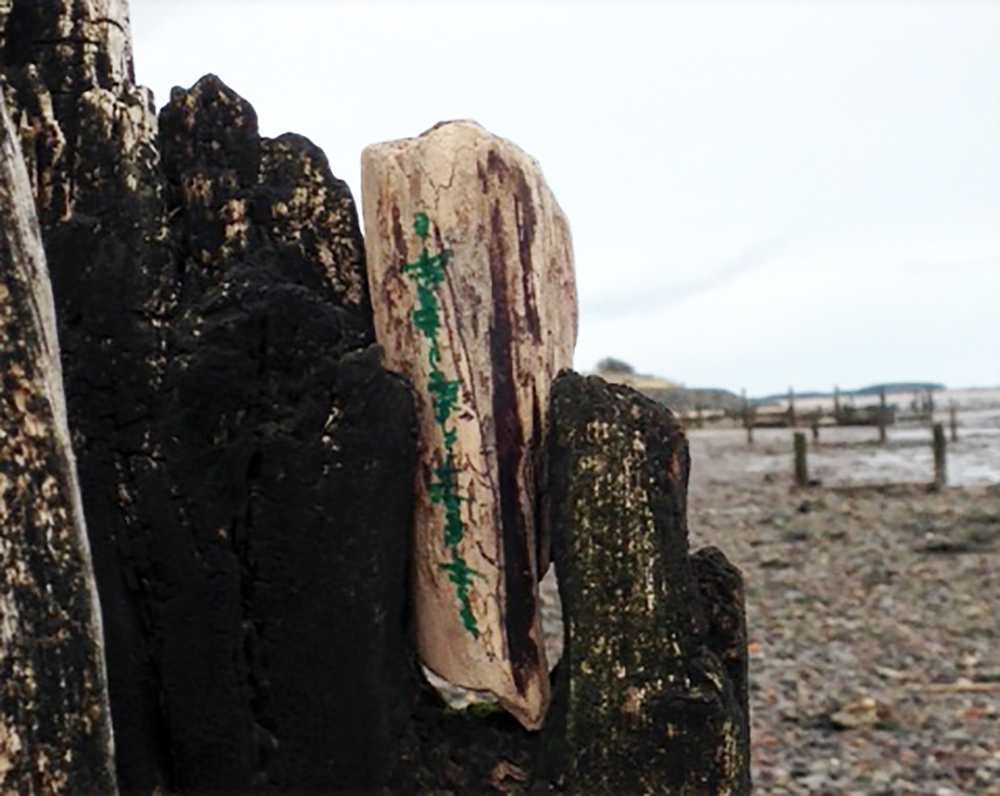
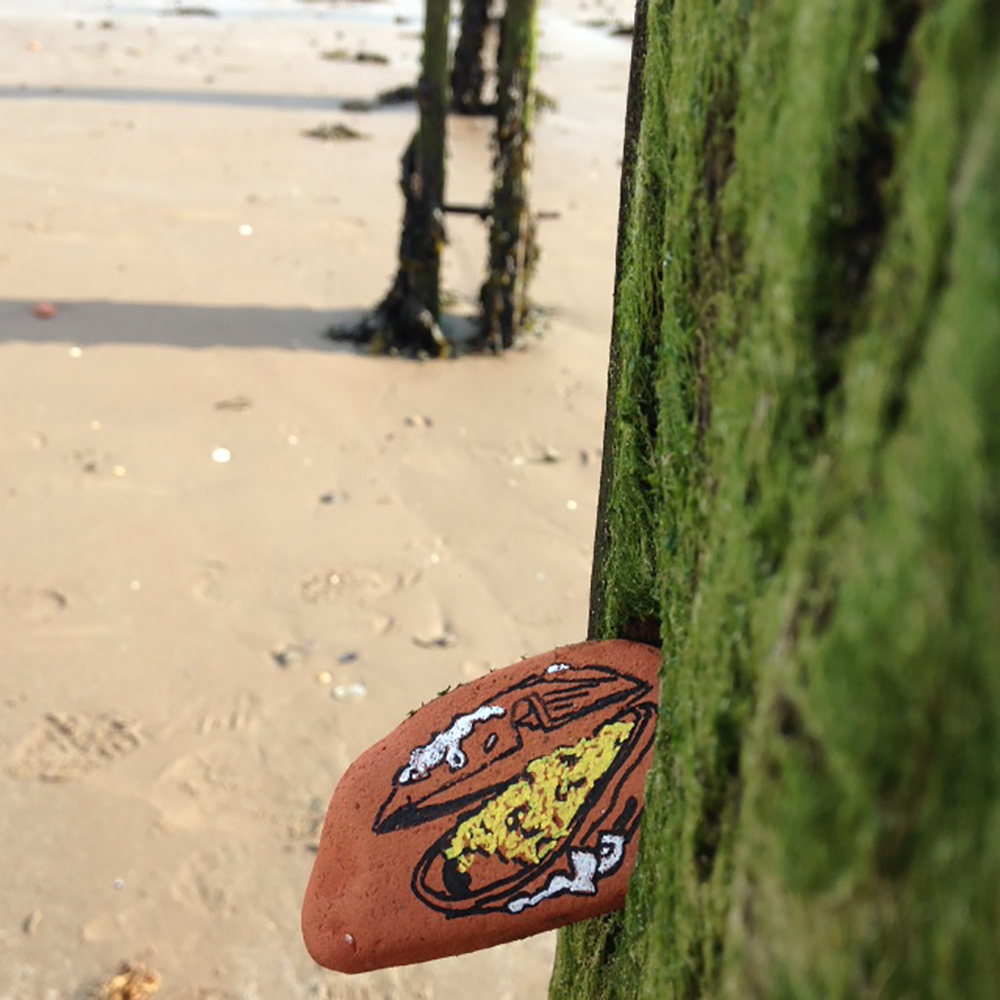
Before lockdown, I made things for my home and my job, but it had been quite some time since I have made any art as an artist. My hope is that I will find some way to continue carving out some time in my days and weeks to continue what has been a rewarding, hopeful experience, using drawing to connect with others.”
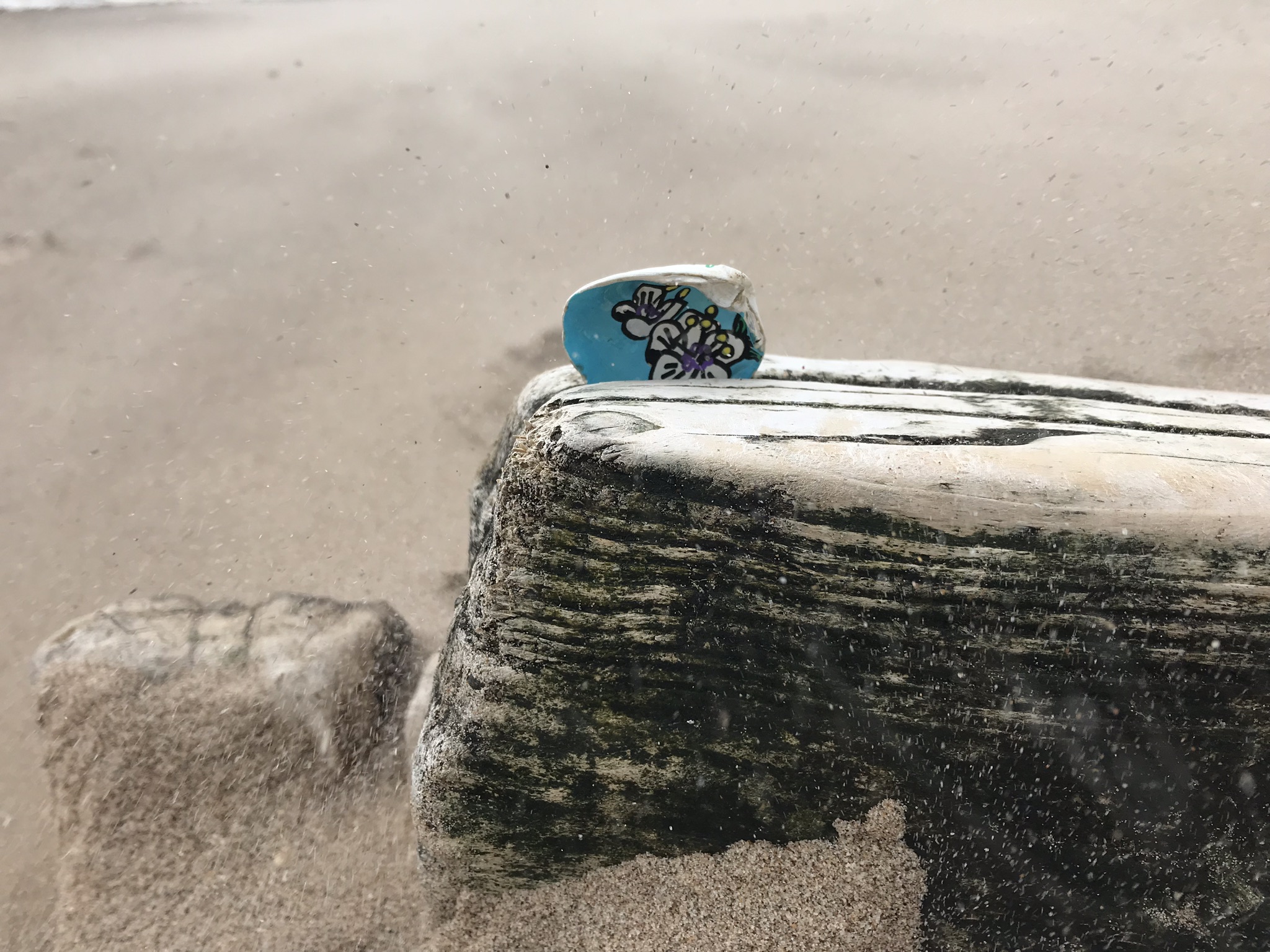
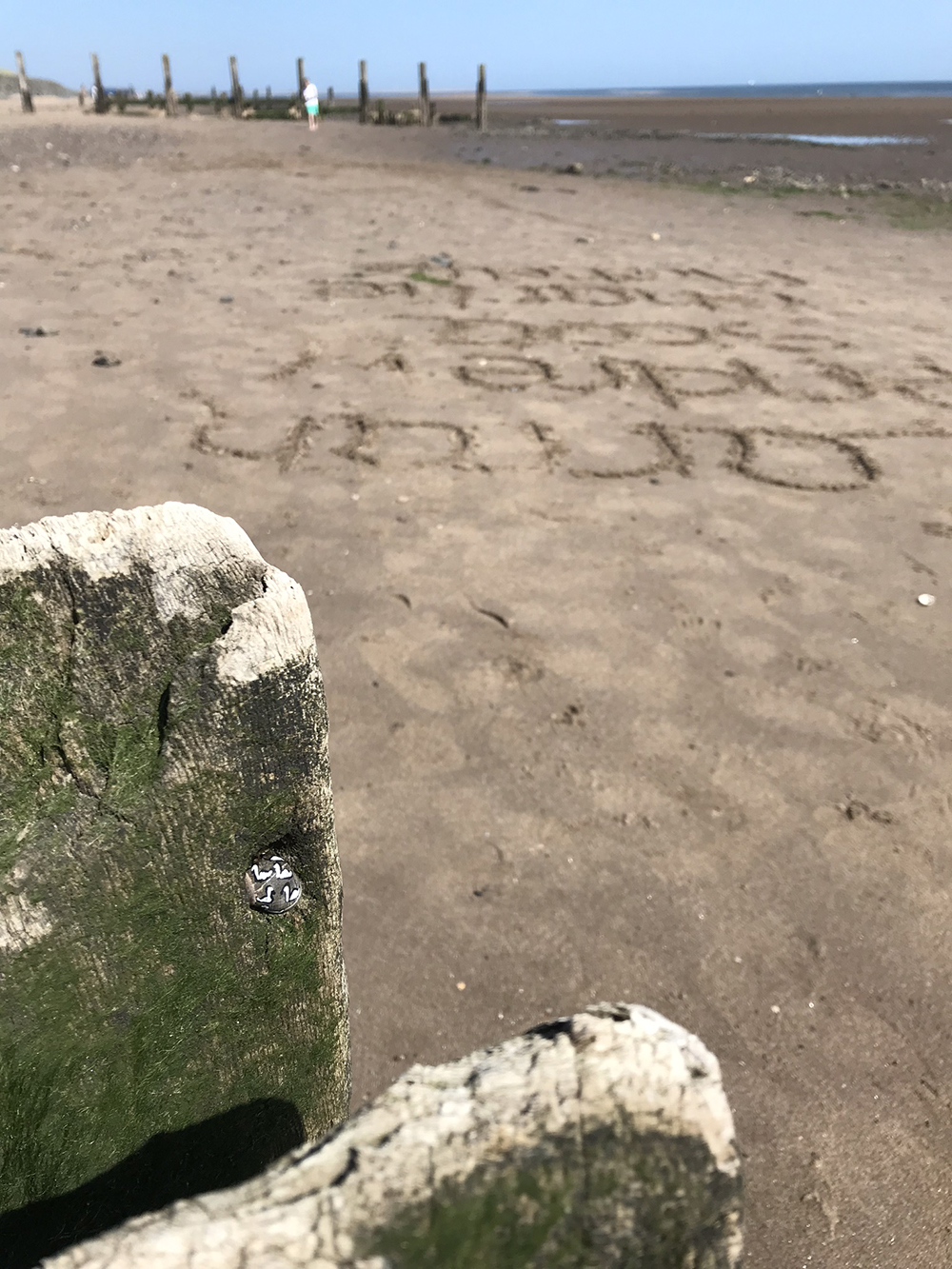
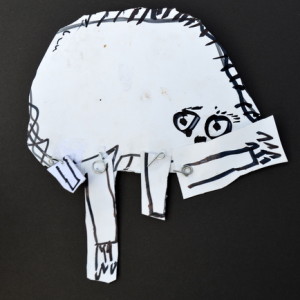
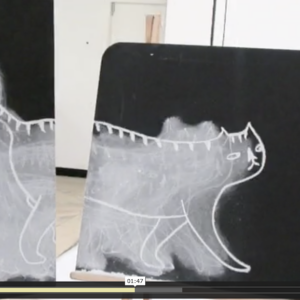
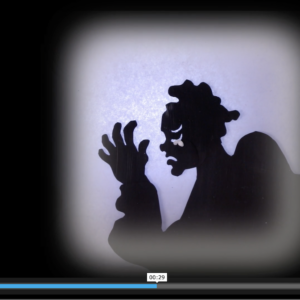
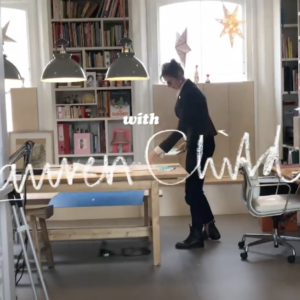
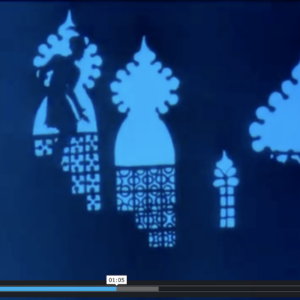





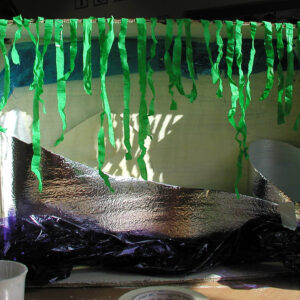
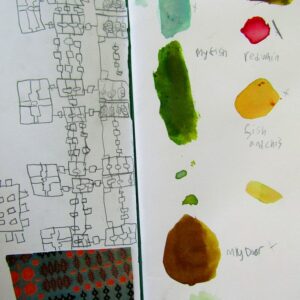
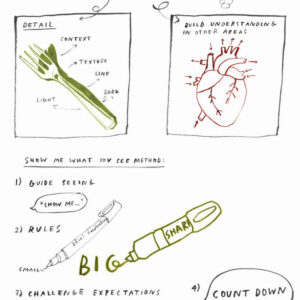
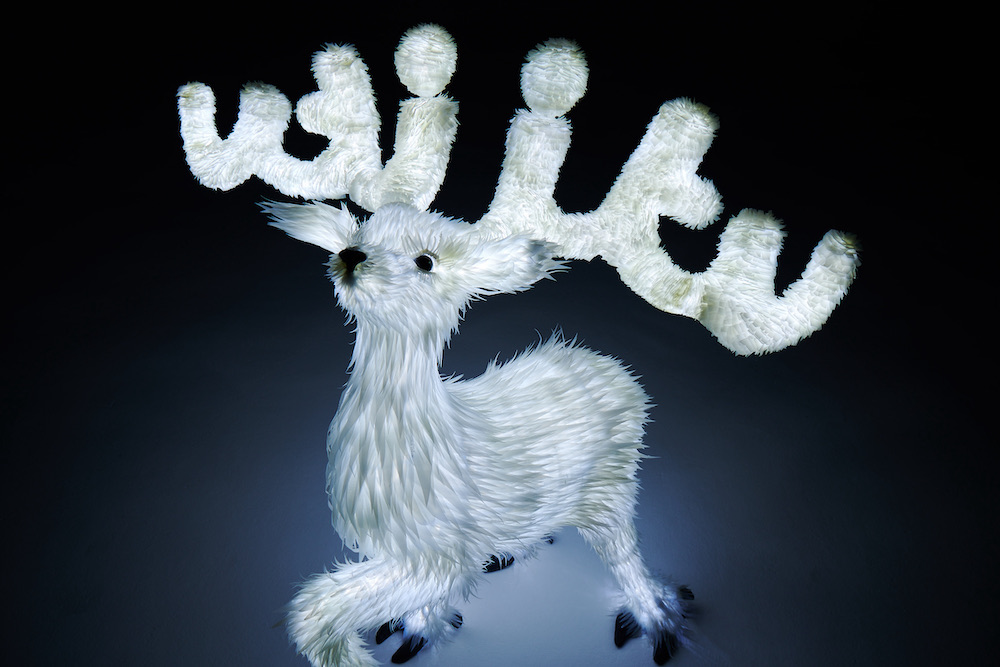 itv Reindeer For itv Creates reimagined Brand Identity by Faith Bebbington (Illuminated Plastic Milk Bottles)
itv Reindeer For itv Creates reimagined Brand Identity by Faith Bebbington (Illuminated Plastic Milk Bottles)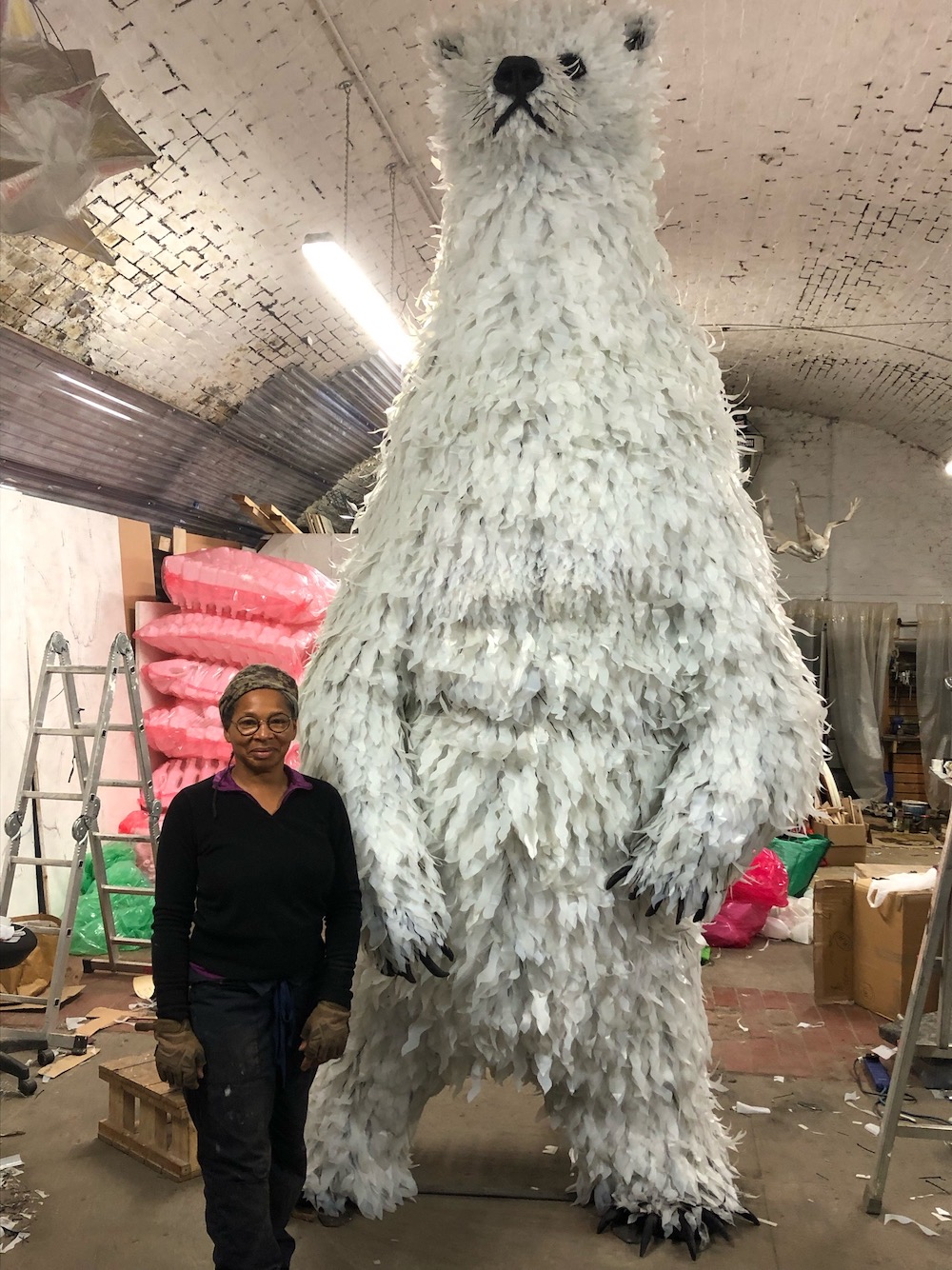 Polar Bear In The Studio (Created With 3000 Plastic Milk Bottles) by Faith Bebbington
Polar Bear In The Studio (Created With 3000 Plastic Milk Bottles) by Faith Bebbington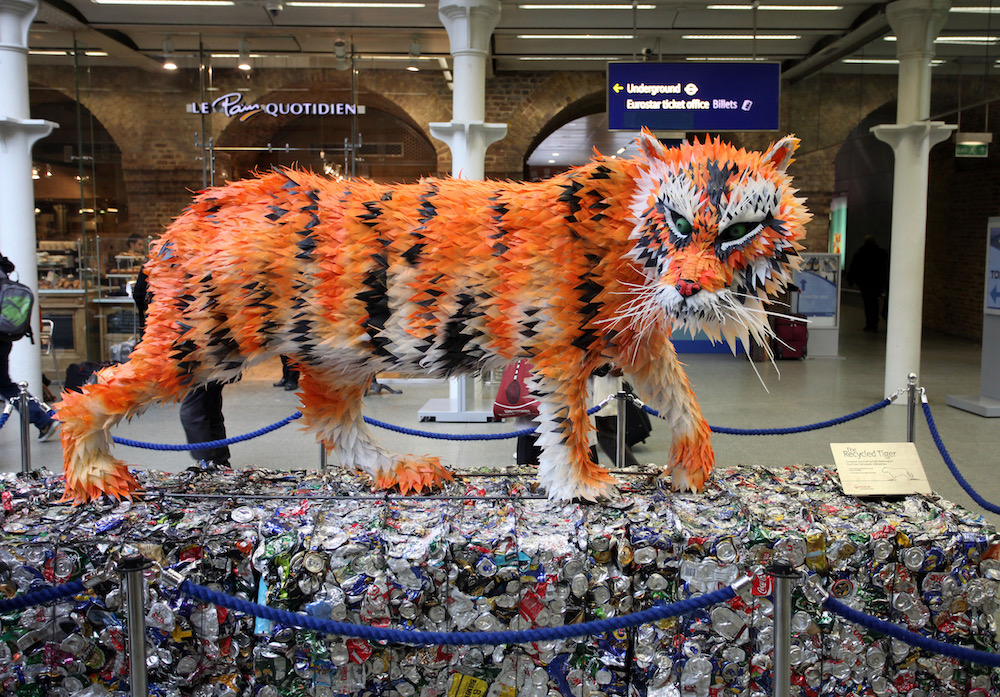 Recycled Plastic Bengal Tiger for Veolia Environment by Faith Bebbington
Recycled Plastic Bengal Tiger for Veolia Environment by Faith Bebbington